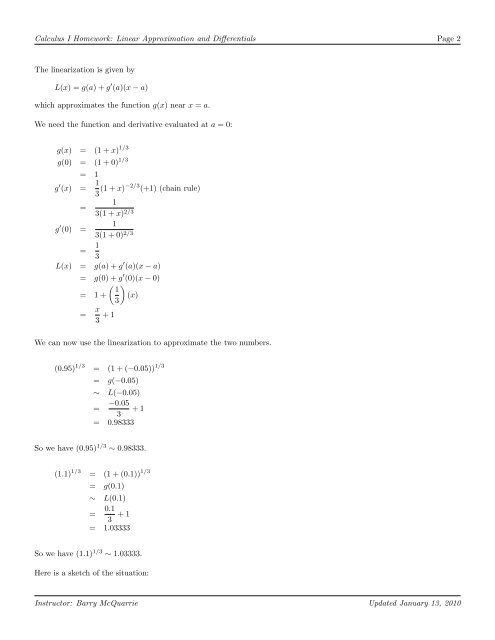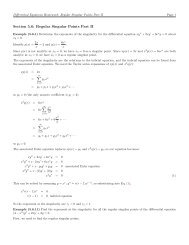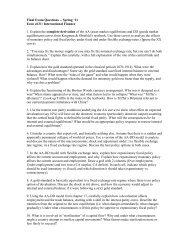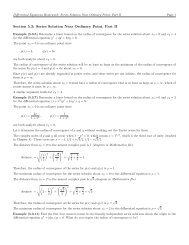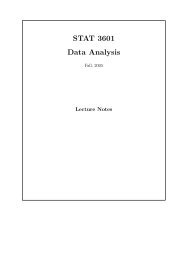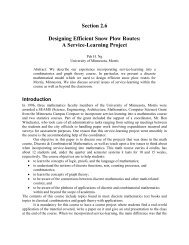Calculus I Homework: Linear Approximation and Differentials Page 1
Calculus I Homework: Linear Approximation and Differentials Page 1
Calculus I Homework: Linear Approximation and Differentials Page 1
Create successful ePaper yourself
Turn your PDF publications into a flip-book with our unique Google optimized e-Paper software.
<strong>Calculus</strong> I <strong>Homework</strong>: <strong>Linear</strong> <strong>Approximation</strong> <strong>and</strong> <strong>Differentials</strong> <strong>Page</strong> 2<br />
The linearization is given by<br />
L(x) = g(a) + g ′ (a)(x − a)<br />
which approximates the function g(x) near x = a.<br />
We need the function <strong>and</strong> derivative evaluated at a = 0:<br />
g(x) = (1 + x) 1/3<br />
g(0) = (1 + 0) 1/3<br />
= 1<br />
g ′ (x) = 1<br />
3 (1 + x)−2/3 (+1) (chain rule)<br />
=<br />
1<br />
3(1 + x) 2/3<br />
g ′ (0) =<br />
1<br />
3(1 + 0) 2/3<br />
= 1<br />
3<br />
L(x) = g(a) + g ′ (a)(x − a)<br />
= g(0) + g ′ (0)(x − 0)<br />
= 1 +<br />
� 1<br />
3<br />
= x<br />
+ 1<br />
3<br />
�<br />
(x)<br />
We can now use the linearization to approximate the two numbers.<br />
(0.95) 1/3 = (1 + (−0.05)) 1/3<br />
= g(−0.05)<br />
∼ L(−0.05)<br />
= −0.05<br />
+ 1<br />
3<br />
= 0.98333<br />
So we have (0.95) 1/3 ∼ 0.98333.<br />
(1.1) 1/3 = (1 + (0.1)) 1/3<br />
= g(0.1)<br />
∼ L(0.1)<br />
= 0.1<br />
+ 1<br />
3<br />
= 1.03333<br />
So we have (1.1) 1/3 ∼ 1.03333.<br />
Here is a sketch of the situation:<br />
Instructor: Barry McQuarrie Updated January 13, 2010


